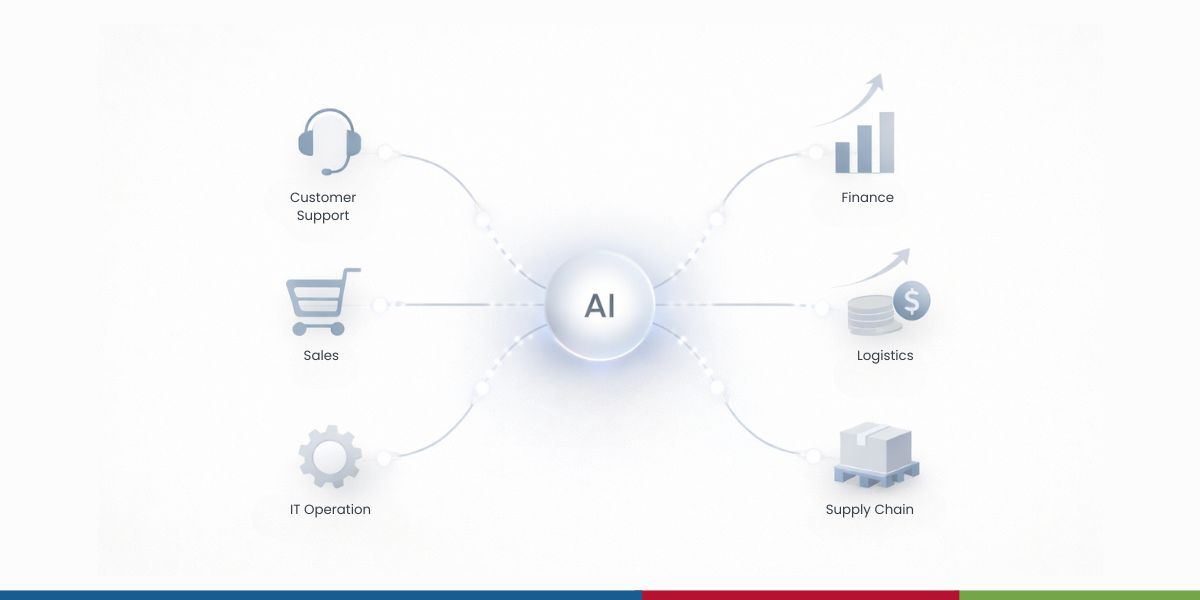Top 3 Blockchain Protocols, Their Working, and The Pros & Cons

4 min read | By Postpublisher P | 27 March 2023 | Blockchain
Blockchain protocols are the rules that determine how a blockchain network operates. These guidelines help in the exchange of information in a simple and effective manner. Such protocols play a very important role as they help to monitor and secure blockchain transactions.
Each blockchain protocol has its own unique features and characteristics. In this article, we will help you understand the different blockchain protocols and guide you to choose the right one for specific applications and business requirements.
The Need for Blockchain Protocols:
If you’re wondering what’s the need for blockchain protocols, here are few points that tells why:
- It set rules and standards for blockchain network operation.
- It defines how transactions are validated and added to the blockchain.
- It governs how consensus is achieved among network participants.
- It ensures that the network operates securely and enforces privacy measures.
- It enables developers to create applications that can interact with the blockchain network.
- It promotes transparency and accountability that generates trust in the system.
The Top Blockchain Protocols:
1. Bitcoin Protocol:
The Bitcoin protocol has a mystery to it. Nobody knows who actually created it. The details we have is, it was created in 2008 by an unknown person or group using the pseudonym Satoshi Nakamoto.
It was designed to provide a decentralised digital currency system enabling peer-to-peer transactions without the need for intermediaries like banks or financial institutions. Since the first Bitcoin transaction took place in 2009, it has grown to become a popular and widely used cryptocurrency.
Working:
The Bitcoin protocol is based on a decentralized network of computers that work together to validate and record transactions. Here’s how they work:
- The transactions are broadcast to the network and validated by a group of computers called nodes.
- Validated transactions are added to a pool of unconfirmed transactions (called the mempool) which is an organized queue where transactions are stored before adding to a new block.
- Miners compete to solve complex mathematical puzzles. The first miner to solve the puzzle receives the right to add a new block of transactions to the blockchain.
- The new block is added to the blockchain, and the transactions within it are considered confirmed.
- The miner who successfully added the block is rewarded with newly created Bitcoins, and transaction fees paid by users.
- The network continues to process transactions, with each block added to the blockchain in a sequential and transparent manner.
The Pros & Cons:
| Advantages of Bitcoin Protocol | Disadvantages of Bitcoin Protocol |
| The Bitcoin protocol is decentralized—meaning any central authority or institution does not control it. | The value of Bitcoin is highly volatile, which can make it difficult to use as a reliable medium of exchange. |
| Transactions on the Bitcoin network are transparent and publicly visible that can be traced on the blockchain. | The transaction fees for Bitcoin can be relatively high, esp. during periods of high network congestion. |
| This protocol is secured by complex cryptography—making it hack proof. | It has limited scalability, with a maximum block size limit of 1 MB. |
| Bitcoin is quite accessible and can be sent and received anywhere in the world with just an internet connection. | Bitcoin transactions can take longer duration, even hours to confirm, which hurts time-sensitive transactions. |
| The Bitcoin protocol has a finite supply of 21 million Bitcoins set by the founders, that prevents inflation. | Some blockchain protocols can be intensive in energy consumption for the nodes on the network to perform complex mathematical calculations & validate transactions. |
2. Ethereum Protocol
The Ethereum Protocol was first introduced in 2013 by Vitalik Buterin – a programmer and cryptocurrency enthusiast. It is a decentralized platform that would allow developers to build and deploy decentralized applications (dapps) using smart contracts.
Now, Ethereum has become one of the most widely used blockchain protocols, with a thriving ecosystem of developers and dapps. With several updates and modifications over the years, its functionality and security have been greatly improved.
Working:
Ethereum protocol enables the creation and execution of smart contracts and decentralized applications. Here is the complete working process.
- Smart contracts are self-executing contracts where the terms and conditions of the agreement are directly written into the lines of code. These contracts are stored on the blockchain and can be executed automatically when certain conditions are met.
- The Ethereum Virtual Machine is a runtime environment for smart contracts on the Ethereum network. It executes the code of each smart contract and manages the state of the Ethereum blockchain.
- Gas is the internal pricing mechanism used by the Ethereum network to process transactions and execute smart contracts. It is used to pay for computational resources and is measured in units of Ether (ETH).
The Pros & Cons:
| Advantages of Ethereum Protocol | Disadvantages of Ethereum Protocol |
| The Ethereum Protocol is also decentralized and can operate without a central authority or intermediary. | Like most blockchain protocols, the Ethereum network can be limited in scalability, particularly when it comes to transaction processing speed. |
| The ability to execute smart contracts on the Ethereum network opens up a range of possibilities for the creation of dapps. | The current proof-of-work mechanism is energy-intensive. |
| It is highly programmable and has a rich set of tools and libraries that make it easy to develop new applications. | It can be complex for developers who are new to smart contracts and dapps. |
3. Hyperledger Protocol
Hyperledger is an open-source collaborative effort created for the advancement of cross-industry blockchain technologies. It was founded in 2015 by the Linux Foundation, a non-profit organization that promotes open-source software.
Hyperledger comprises several blockchain protocols, each with a specific focus and set of use cases. These protocols are developed by a global community of developers and businesses, and are designed to be modular, flexible, and interoperable.
Working:
The Hyperledger protocol is a permissioned blockchain ( not publicly accessible) protocol for private entities and companies. Here’s how it works:
- Hyperledger is a permissioned network meaning that participants are chosen. Not all can access it, only the users with permissions can. This allows for greater control over network access and transaction processing.
- Depending on the protocol being used, it uses a variety of consensus mechanisms. For example, the Hyperledger Fabric protocol uses a consensus mechanism called Practical Byzantine Fault Tolerance (PBFT), which is designed for high throughput and low latency.
- Hyperledger supports the development and deployment of smart contracts, which are written in programming languages such as Java, Go, and JavaScript.
- The Hyperledger protocol is designed to be modular (separates the data and the processing elements), with different components that can be swapped in and out depending on the specific use case.
The Pros and Cons:
| Advantages of Hyperledger Protocol | Disadvantages of Hyperledger Protocol |
| It is specifically designed for private use in enterprise-grade applications—focusing on scalability, security, and flexibility. | Limited adoption as it is not widely used as other blockchain protocols such as Bitcoin and Ethereum. |
| The modular design of the Hyperledger Protocol allows users to choose the components that best fit their specific use case, making it highly flexible and adaptable. | The use of private permissioned networks in the Hyperledger Protocol can result in a more centralized system, which may not be desirable for all. |
| It supports the use of private, permissioned networks, which can provide increased privacy and security for enterprise applications. | The Hyperledger Protocol can be more complex for developers who are new to enterprise-grade applications and distributed ledger frameworks. |
We hope this article has explained you the top blockchain protocols you need to know with their working structure, advantages and disadvantages.
Get in touch with our blockchain development service experts to know more about how this emerging technology can be integrated into your business.
The latest from our editors
Join over 150,000+ subscribers who get our best digital insights, strategies and tips delivered straight to their inbox.


